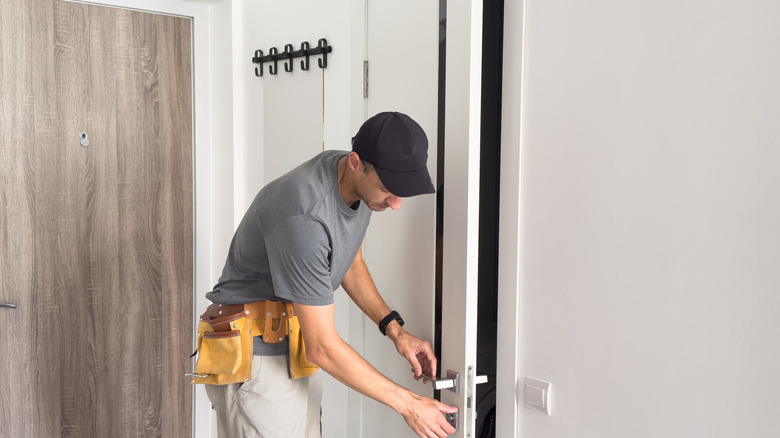Why You Should Always Use A Spring Hinge When Installing A New Door
We may receive a commission on purchases made from links.
You may look at your front door as just another functional piece of the puzzle, a tool for warmth and safety. But the perfect front door is much more than that. It's the focal point of your home's architecture.
That said, it's disheartening that such an integral part of the house can be the source of endless frustrations. If you're asking how a front door can be the means of making your life almost unbearable, it's probably because you haven't dealt with two kinds of people: those who won't shut the door well on their way out of the house and those who loudly slam it, leaving you staring at the vibrating frame. The problem is that slamming a door doesn't just grate nerves; it's a common mistake that's sure to damage your door, and the impact can push the jamb out of alignment.
How about if we told you that, going forward, you don't have to worry about those who have no idea how to close a door firmly? Yes, the trick is to always use a spring hinge when installing a new door — and voila! Problem solved. Your door will automatically close.
How to install a new door with a spring hinge
Although you can install a spring in your door hinge through the above DIY hack, which involves dissembling your door hinge, fitting the spring between its flaps, and putting everything back together again, you don't have to jump all those hoops. Just head over to your local hardware store and get yourself a spring-loaded, self-closing door hinge. The price depends on several factors, including brand, materials used (steel hinges are more expensive), and number of packs. HOSOM's 4-inch, spring-loaded door hinges retail for $19.99. Note that hinges come in different sizes; however, 3.5-inch door hinges are typically the standard size. Also, bear in mind that the number of spring hinges you'll use depends on the type and weight of your door. For example, a hollow core door may only need one spring hinge, whereas solid wood doors may require at least two.
Now that you have your spring hinge, unfasten the screws to remove the existing door hinge, place the spring hinge in its place, and install the screws to the door frame. The next step is to apply tension to the hinge by carefully following the instructions that often come with the hinge. Typically, you insert the provided Allen key from the top, insert the tension pin into the tension hole, and move it clockwise until the desired tension is achieved. The entire process can take less than five minutes.
